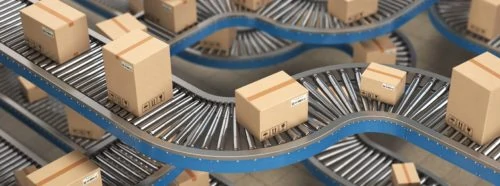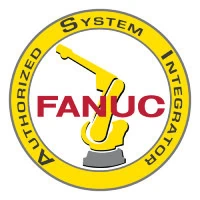Crucial Considerations for E-Commerce Packaging

Packaging is not only a necessary part of shipping and transport, it is also one of the most effective ways for a business to provide online customers with a personal touch and a positive first impression. Everything about e-commerce packaging, from its size to its coloring and aesthetic design, serves to establish a brand identity while improving the profitability of your business. Memorable, attractive e-commerce packaging designed with the following factors in mind increases brand recognition, improves overall efficiency, and reduces costs.
Consider the Box/Package Size
Compared to standard packaging, e-commerce packaging can often be smaller and softer, eliminating the need for many features such as hanging tabs. This means that you can design your box and packaging to be optimized for shipping. Even light items can be heavy and bulky if packaged improperly, making them expensive to ship. Many items that are not delicate or fragile can be shipped in a padded mailer, unprinted or printed. This reduces shipping material costs and shipping costs.
To reduce costs, it is vital to consider the size of the product, as well as how many products will need to fit into one box. By choosing lightweight packaging that perfectly fits the product, you will be able to reduce the size of your boxes. This helps protect the product, as there is less space for it to slide around. Additionally, by reducing the need for void fill, your company will be more eco-friendly and save money on unnecessary materials.
Consider the Box/Package Material
In addition to the size of the packaging, the material itself plays an important role in the durability and weight of the final product. Although always an important consideration, durability is particularly essential for e-commerce packaging, as the product must uphold during shipping and arrive to the customer in pristine condition. Packaging that fails to protect the product during transit will result in dissatisfied customers and higher return rates (and likely, negative reviews).
Wherever possible, choosing flexible packaging over rigid packaging is optimal. Flexible packaging is easier to fit into compact boxes or envelopes, reducing weight and making it easier to ship items without unnecessary amounts of negative space. This also helps reduce waste, lessening your impact on the environment and improving your brand image.
However, more fragile items may require stiffer packaging for protection. In these cases, double-walled cardboard boxes and the proper void fill or product cushioning are often a good way to ensure the product reaches its final destination without damage.
Tape Selection
Although packing tape may seem to be a straightforward, set-in-stone aspect of the packaging process, it can actually serve several important purposes at once, including:
- Sealing the box
- Providing a marketing message
- Improving brand recognition
Tape can also serve as additional advertising on every box. If you choose to print your logo on packing tape, it will help your packaging stand out to customers from the moment it lands on their doorstep. It will also be recognizable to anyone else around who may see the box, driving new customers to your business.
Void Fill, Packaging Cushioning, Make-Your-Own Mailers, and Automated Packaging Systems
E-commerce manufacturers looking to optimize the safety and protection of their products throughout the shipping process should explore the various void fill packaging, packaging cushioning, and custom mailer solutions available to them – as well as packaging automation systems to make dispensing these products much more efficient.
Void fill and cushioning products are types of packaging fillers, and they are excellent, protective means of bracing products from facility to destination. You have likely encountered EPS- or styrofoam-based void fill (the peanut-shaped, lightweight, and pourable variety). As sustainability is one of the biggest up-and-coming trends in the realm of packaging, the use of paper-based void fill has quickly become a popular packaging solution. Paper void fill is 100% biodegradable and a great way to immediately improve the sustainability of your packaging, and to resonate with eco-conscious customers.
Foam and bubble cushioning offer high levels of protection, as well. Foam is an ideal option for those looking to protect products in transit from scratches (paper is not as effective for this case). Bubble cushioning is a reputable and sturdy protector, and it is a great option for high-shock, high-vibration conditions. A hot topic in the packaging industry is the use of on-demand inflatable systems over traditional bubble cushioning, as this can largely improve the speed, safety, and waste reduction of protective packaging. These systems are particularly worth considering if rapid production growth and space constraints are expected.

The Storopack PAPERplus® Chevron Pack Table provides flexible and protective paper cushioning.
Traditionally, customers have had to adapt existing mailers to their needs – today, make-your-own mailers make it possible to have these packaging solutions tailor-made to customers’ own specifications. For example, PAC offers build-your-own mailers to bring an exact mailer size and look to life.
Automated packaging systems are an excellent way to significantly increase the speed and efficiency of dispensing void fill, cushioning, and custom mailers. Examples of automated equipment include the PACJacket, which can produce 15–20 bags per minute with quality, precision and speed, and the Polyair® X-Fill™ System, which features a rapid throughput speed of 335 ft/min and produces a higher yield.
Consider Branding and Unboxing
When it comes to e-commerce packaging, the box is your customer’s first and main interaction with your business. While retail shops are able to create an in-person experience for the customer, e-commerce depends on packaging to connect with the customer and provide a memorable experience.
Brand-specific colors and designs on the exterior of the box will improve brand visibility, but the interior of the packaging is equally important. Consider the customer’s unboxing experience: the box should be easy to open and aesthetically pleasing on the inside. Depending on the type of products you are shipping, you may opt for modular packaging to keep the products in place and avoid a disorganized appearance.
E-commerce Packaging at TPC Packaging Solutions
For over five decades, TPC Packaging Solutions has been working closely with companies in virtually every industry to provide expert packaging products, equipment, and services. We attend trade shows globally, and are continually expanding our knowledge on the latest trends and technologies to provide the most accurate guidance on e-commerce packaging. To work with us on your next project, contact us here and a TPC Packaging Solutions team member will reach out to help.


